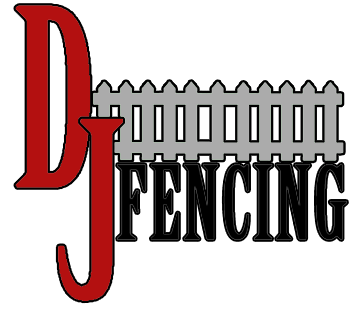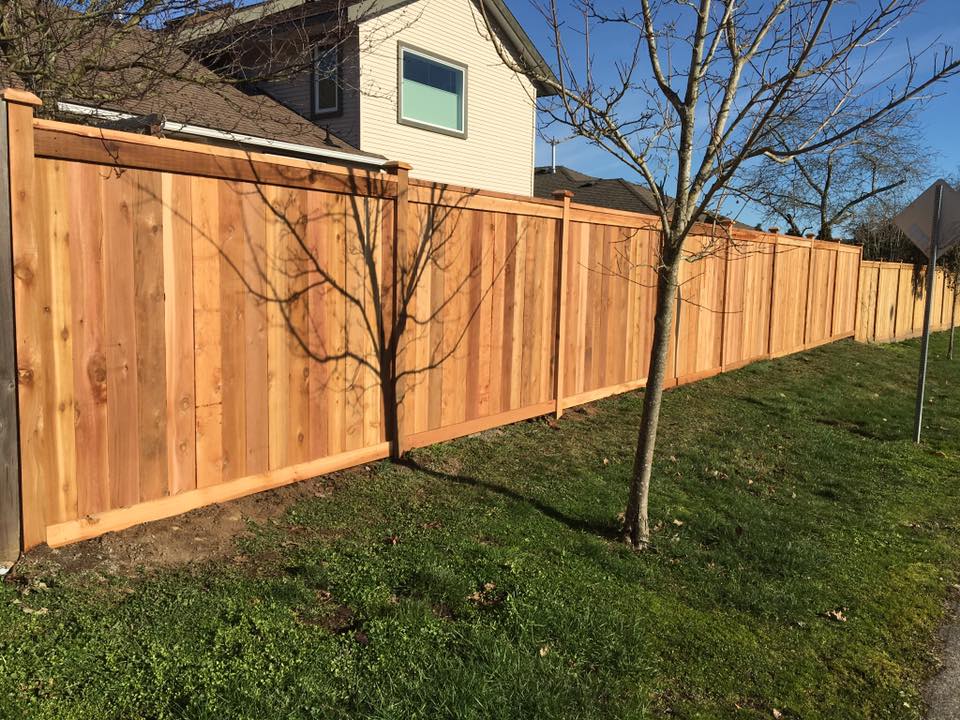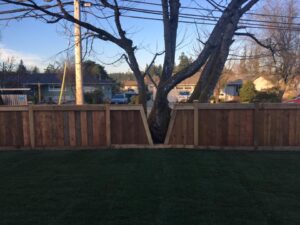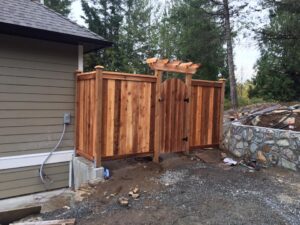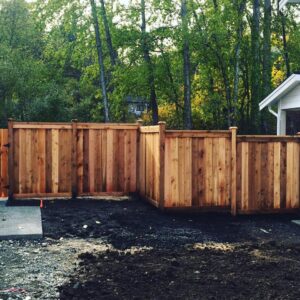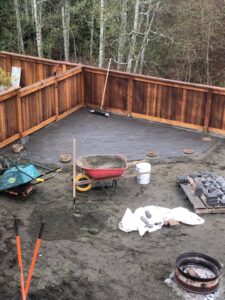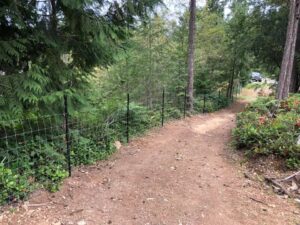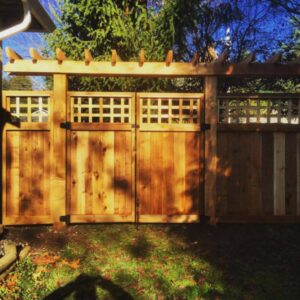When you’re thinking about installing a fence, timing plays a key role in ensuring a successful project. Each season brings its own benefits and challenges that can affect everything from ground conditions to contractor availability. By understanding these seasonal patterns, you can make an informed decision about when to start your fence installation. So, which season really offers the best conditions for your project?
Quick Summary
- Spring is often the best season thanks to mild temperatures and workable ground, which make digging and post-setting easier.
- Fall offers cool weather, fewer bugs, and better contractor availability—plus potential savings on installation costs.
- Summer brings longer days but also higher temperatures and drier soil, which require extra care during installation.
- Winter can be tough because of frozen ground, but you might save money and enjoy faster completion due to lower demand.
- Always check local permits and regulations before starting, as these can affect the timing and process of installation.
Understanding Seasonal Weather Patterns
When planning your fence installation, understanding seasonal weather patterns can make a big difference in both the process and the lifespan of your fence.
Weather conditions like heavy rainfall or extreme heat can affect your installation timeline and the materials you choose. For example, working in rainy conditions can lead to muddy ground, making digging difficult and potentially weakening your fence’s foundation.
On the other hand, extreme heat can warp wood and affect how concrete cures. By studying how weather affects your materials, you can pick the best time for installation and ensure your fence stays strong for years.
Knowing how each season impacts your project helps you plan smarter, save time, and get better long-term results.
Spring: The Ideal Time for Fence Installation
Spring provides excellent conditions for fence installation. With mild temperatures and less rainfall, outdoor work becomes easier and more efficient.
The soil is soft enough for digging, which makes it simpler to set posts and create a stable foundation. Overall, spring offers one of the best opportunities for a smooth and successful fencing project.
Optimal Weather Conditions
As the weather warms and the ground thaws, spring becomes the perfect season to install your fence.
The mild temperatures make working outside comfortable and help protect materials from damage. Wood, vinyl, and metal fences all handle spring conditions well, minimizing risks like warping or cracking.
With fewer weather disruptions and steady conditions, your project can move along without unexpected delays, helping you finish on schedule and with precision.
Ground Conditions Favorable
Spring’s ground conditions are ideal for digging and post-setting. As frost melts, the soil becomes easier to work with, allowing you to dig efficiently and place posts securely.
Moisture levels are typically balanced—not too wet or dry—which keeps posts stable as the soil settles. Combined with pleasant temperatures, spring makes the installation process more comfortable and productive.
Summer: Pros and Cons of Installing a Fence
When planning a summer fence installation, it’s important to consider how heat and dry weather might affect your project.
High temperatures can make work physically demanding, and dry soil may complicate digging and post placement. However, with proper planning, you can still achieve a long-lasting and durable fence.
Weather Considerations
Summer offers long daylight hours, giving you more time to work outdoors—but it also comes with challenges.
Extreme heat can cause materials like vinyl to warp or expand, while the sun’s intensity can harden the soil, making it more difficult to dig. It’s best to schedule installation during cooler times of the day, such as mornings or evenings.
Additionally, summer storms can appear unexpectedly, so be prepared for potential interruptions. Understanding these conditions helps you adjust your approach and keep your installation on track.
Soil Conditions
Summer’s dry, compacted soil can make digging more difficult. While warm soil can sometimes make work easier, low moisture levels can create tough ground that’s hard to penetrate deeply.
Sudden rainstorms may also change soil consistency, affecting the fence’s stability. Keeping an eye on soil moisture and making small adjustments as needed can help ensure your posts stay secure and your fence remains sturdy.
Fall: A Popular Season for Fence Projects
As summer ends and the air turns crisp, many homeowners choose fall for fence installation. The cooler temperatures make outdoor work pleasant, and the colorful scenery provides a beautiful backdrop for your new fence.
Fall is also a great time to use strong, weather-resistant materials that can endure winter conditions. With fewer insects and slower plant growth, it’s easier to clear your workspace and maintain clean lines during installation.
Another bonus—contractors often have more open schedules in fall, meaning better pricing and faster turnaround times. It’s a smart and scenic time to complete your fencing project before winter arrives.
Winter: Challenges and Benefits of Cold Weather Installation
Installing a fence in winter brings a mix of challenges and advantages.
The main difficulty is dealing with frozen or snow-covered ground, which can make digging and securing posts harder. Specialized tools and techniques may be needed to maintain stability in cold conditions.
However, winter installation offers benefits too. Contractors are usually more available, meaning your project can be completed more quickly. The bare landscape also helps you visualize your property’s layout more clearly.
Plus, since it’s the off-season, you might enjoy discounts or cost savings. With the right preparation, a winter fence project can be efficient and cost-effective.
Budgeting for Fence Installation by Season
Your budget can also be affected by the time of year you choose for installation.
In spring and summer, demand for fencing materials and labor is high, which can raise prices.
In contrast, fall often brings competitive pricing, as contractors aim to book final projects before winter.
Winter installations might offer even lower costs, but you’ll have to deal with challenges like frozen ground and limited material supply.
Keep in mind that material type matters too—wood tends to be more expensive in humid months due to treatment needs, while vinyl remains consistent year-round.
Availability of Contractors Throughout the Year
Contractor availability can vary widely depending on the season, and this can greatly impact your project timeline.
During spring and summer, fencing contractors are in high demand, which can make scheduling difficult and potentially delay your installation.
Fall and winter, however, usually bring more flexible scheduling and even better pricing opportunities. During these months, contractors often have more time to focus on your project, leading to faster completion and more personalized attention.
Local Regulations and Restrictions on Fence Installation
Before starting your fence installation, make sure to check local regulations and permits.
Many areas require a permit before installation, and zoning laws may limit fence height, style, or placement. These rules help maintain neighborhood standards and ensure safety.
In some communities—especially historic districts—certain materials or designs may be restricted. Understanding these guidelines ahead of time will help you avoid fines or delays and keep your project running smoothly.
Taking this step early ensures your fence is both beautiful and fully compliant.
Frequently Asked Questions
How Long Does the Fence Installation Process Typically Take?
The fence installation process usually takes one to three days, depending on your project’s size. Keep in mind that weather conditions can affect the schedule, so plan for possible delays during heavy rain or extreme temperatures.
What Materials Are Best Suited for Different Seasons?
Different materials handle weather differently. Wood can warp in humid conditions, while vinyl performs better in cold weather. Metal fences, when properly treated, resist rust and can withstand all seasons. Choose materials that match your local climate for long-lasting results.
Can I Install a Fence Myself, or Should I Hire a Contractor?
You can install a fence yourself if you’re handy and have the time, but hiring a professional contractor ensures accuracy, durability, and efficiency. Compare your skills and schedule with the complexity of the job to decide what’s best for you.
How Do I Maintain My Fence After Installation?
Inspect your fence seasonally for wear or damage. Clean it regularly and apply sealants or protective coatings as needed. Proper maintenance extends your fence’s lifespan and helps prevent costly repairs.
Are There Any Warranties for Fence Installations?
Yes, most fence installations include warranty coverage. Check with your contractor for details, as coverage varies depending on the material and company policy. Warranties help protect you from defects or installation issues.
Conclusion
In the end, the best time to install a fence depends on your local climate, budget, and personal schedule. While spring and fall usually offer the best weather conditions, summer and winter each have their own benefits and drawbacks.
By considering seasonal factors, contractor availability, and local regulations, you can plan your installation for maximum efficiency and long-term strength. Choosing the right time ensures your fence not only looks great but also stands the test of time.
